Florence’s cathedral museum, known officially as Museo dell’ Opera di Santa Maria del Fiore (Museum of the Works of the cathedral of Santa Maria del Fiore), hosts the world’s largest collection of Florentine Medieval and Renaissance sculpture. It reopened to the public on October 29, just in time for Pope Francis’s visit, after an expansion and renovation project lasting two years. The 45 million euro project was funded by the Opera di Santa Maria del Fiore, and was design by Adolfo Natalini and Guicciardini & Magni Architects.
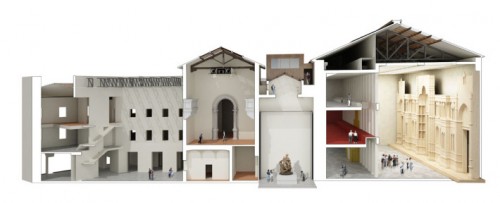
The museum is the anchor for what is known as Il Grande Museo del Duomo, which also includes the Duomo, the Campanile (Giotto’s Bell Tower), the Cupola (Brunelleschi’s Dome), the Baptistry, and the Crypt.
Inside the Museum
Known more simply as the Opera del Duomo or Duomo Museum, it now contains over 750 marble, bronze and silver sculptures and reliefs, including works by Michelangelo, Donatello, Arnolfo di Cambio, Lorenzo Ghiberti, Andrea Pisano, Antonio del Pollaiolo, Luca della Robbia and Andrea del Verrocchio, among others.
The museum displays the original artworks that have been removed from their positions from the façades of the Duomo, Bell Tower, and Baptistry (thereafter replaced by copies) or taken out of daily liturgical use, either for conservation or modernization.
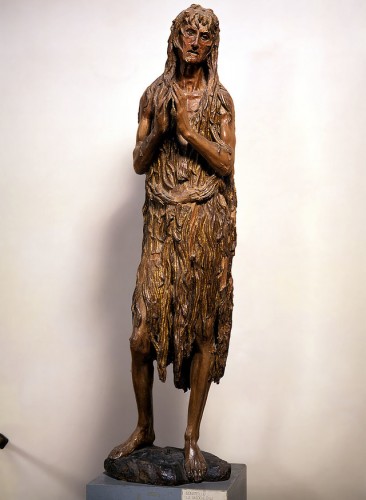
New displays effectively highlight Donatello’s Maddalena, sculpted in wood; the original bronze doors created by Lorenzo Ghiberti for the Florence Baptistry, known as the “Doors of Paradise”; Michelangelo’s unfinished Pietà; and 27 silk and gold embroidered panels designed by Antonio del Pollaiolo.
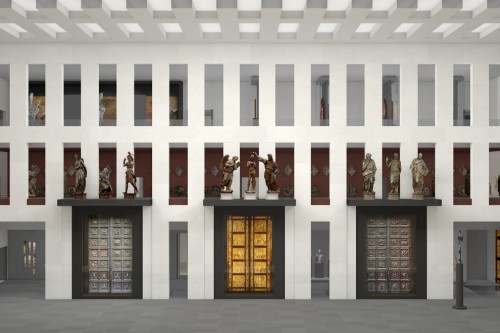
The Gallery of Brunelleschi’s Dome (1418–36), on the first floor, is one of the most educational highlights of the museum, housing 15th century wooden models including one attributed to Brunelleschi himself, period materials and the tools used to build the dome. The gallery also contains two large wooden models of the Lantern and of the Dome and video provides a virtual view of the building of the edifice.
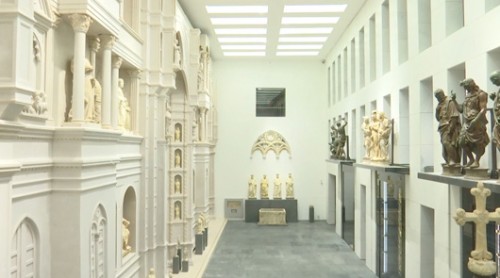
Because the space of the museum doubled in the new renovation, visitors can also see many works previously held in museum storage, including forty 14th and 15th century statues and fragments of the cathedral’s original medieval façade, which are effectively displayed on a full-sized model made of resin and marble dust of the version designed by Arnolfo di Cambio (1296) that was subsequently destroyed in the 16th century and replaced in 1887 by the present façade. The new Duomo Museum project was under creative direction by Monsignor Timothy Verdon. He is reported saying that the biggest problem was “how to exhibit more than 100 fragments of the cathedral’s lost medieval facade, dismantled in 1586-87, forty statues, many monumental in scale, and some sixty architectural elements”. The medieval façade was rebuilt on the basis of an extant 16th century drawing. The grand room is entitled Salone del Paradiso.
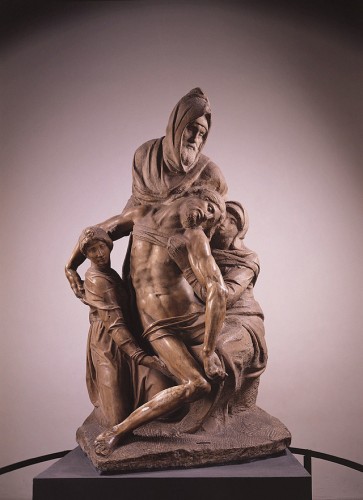
Michelangelo’s Pietà used to be displayed in a small niche room off a stairway in the old museum. Now it has its own room, the Tribuna di Michelangelo. This was Michelangelo’s next-to-last sculpture that, according to contemporary sources, “he meant to adorn the altar near which he expected to be buried in a Roman church. Begun around 1546-1547, the Pietà was abandoned at the end of 1555, when Michelangelo mutilated it: a destructive act due to the elderly master’s frustration at finding flaws in the marble block. Pieced back together, the work was acquired in 1671 by Cosimo III de’ Medici, Grand Duke of Tuscany, and placed in the crypt of the Basilica of San Lorenzo; in 1721 it was transferred to the Duomo and set opposite the Holy Sacrament altar.” (museumflorence.com)
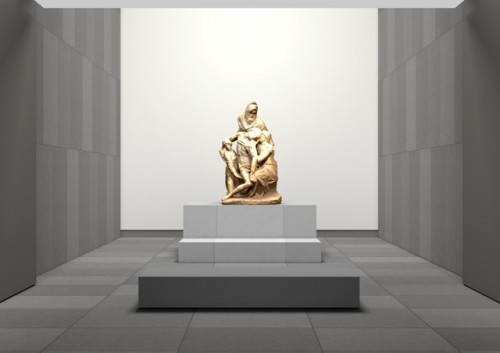
American Director of the Museum
Monsignor Timothy Verdon was born in the United States (Weehawken, NJ, 1946). He is an art historian with a Ph.D. from Yale University.
His first interest in Italian art started as a teenager with visits to the New York City Metropolitan Museum. His first visit to Italy was a trip to Venice at the age of 18. He planned to immerse himself in Renaissance art and based his future studies on the use of iconography in Renaissance and Medieval art.
He has lived in Italy for 47 years and since 1994 has been a Roman Catholic priest in Florence, where he directs both the Diocesan Office of Sacred Art and Church Cultural Heritage and the Cathedral Foundation Museum (Museo dell’Opera di Santa Maria del Fiore).
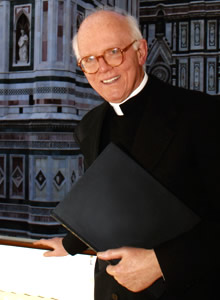
Author of books and articles on sacred art in Italian and English and has been a Consultant to the Vatican Commission for Church Cultural Heritage and a Fellow of the Harvard University Center for Italian Renaissance Studies (Villa I Tatti), and currently teaches in the Florence Program of Stanford University.
Monsignor Verdon’s decisions to make this not only a museum containing the past, but to use the communication tools of the present, served to create one of the most relevant museums in Italy for visitors of all ages and interests.
Tickets
The combined ticket for the Baptistry, Bell Tower, Dome, Crypt and museum is €15 (Children 6 to 11, €3; under 6, free). Entry to the cathedral is free.
Photos and Video of the Museum
Get a preview of the Museum with a walk through described and photographed by art historian, Alexandra Korey.
The website of Il Grande Museo del Duomo has additional videos and photos.
National Geographic documentary about Brunelleschi’s Dome.
Articles in the Wall Street Journal and NYTimes.
